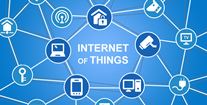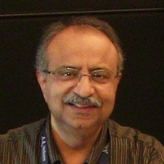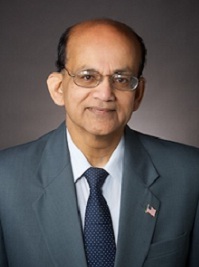Micro Tutorial: Introduction to Internet of Things (IoT)
A Joint Education Society (Chapter 13) & Computer Society (Chapter 5) Presentation

Introduction to the IoT Ecosystem
The Internet of things (IoT) is the inter-networking of physical devices, vehicles (also referred to as "connected devices" and "smart devices"), buildings, and other items—embedded with electronics, software, sensors, actuators, and network connectivity that enable these objects to collect and exchange data.
IoT is viewed as "the infrastructure of the information society." IoT allows objects to be sensed or controlled remotely across existing network infrastructure, creating opportunities for more direct integration of the physical world into computer-based systems, and resulting in improved efficiency, accuracy and economic benefit in addition to reduced human intervention.
When IoT is augmented with sensors and actuators, the technology becomes an instance of the more general class of cyber-physical systems, which also encompasses technologies such as smart grids, virtual power plants, smart homes, intelligent transportation and smart cities. Each thing is uniquely identifiable through its embedded computing system but is able to interoperate within the existing Internet infrastructure. Experts estimate that the IoT will consist of almost 50 billion objects by 2020.
State of Opportunity: Companies are challenged to find the people with skills in order to develop, maintain and expand IoT at all levels and cross sections.
Key Target/Objective: This entire seminar is designed to enable folks to be well informed on the higher level technical aspects of IoT, so they can step into this world with full confidence, with the right perspective.
Date and Time
Location
Hosts
Registration
-
 Add Event to Calendar
Add Event to Calendar
- EC 275 Engineering Center
- Oakland University
- Rochester, Michigan
- United States 48309-4479
- Building: Engineering Center
- Room Number: EC 275
- Click here for Map
- Contact Event Host
-
sharan.kalwani@ieee.org, Phone: +1 (248) 980-UNIX
For final registration, you will be contacted directly via email to confirm your current & valid IEEE membership and finish pre-payment. Once validation is completed, you will receive an attendee confirmation.
- Co-sponsored by Subramaniam Ganesan
- Starts 17 May 2017 04:00 AM UTC
- Ends 25 July 2017 07:05 PM UTC
- Admission fee ?
- Menu: Student ($10), Member ($20), Non-member ($40)
Speakers
 Sharan Kalwani of IEEE Education Society
Sharan Kalwani of IEEE Education Society
IoT: An Introduction
The Internet of things (IoT) is the inter-networking of physical devices, vehicles (also referred to as "connected devices" and "smart devices"), buildings, and other items—embedded with electronics, software, sensors, actuators, and network connectivity that enable these objects to collect and exchange data. In 2013 the Global Standards Initiative on Internet of Things (IoT-GSI) defined the IoT as "the infrastructure of the information society." The IoT allows objects to be sensed or controlled remotely across existing network infrastructure, creating opportunities for more direct integration of the physical world into computer-based systems, and resulting in improved efficiency, accuracy and economic benefit in addition to reduced human intervention. When IoT is augmented with sensors and actuators, the technology becomes an instance of the more general class of cyber-physical systems, which also encompasses technologies such as smart grids, virtual power plants, smart homes, intelligent transportation and smart cities. Each thing is uniquely identifiable through its embedded computing system but is able to interoperate within the existing Internet infrastructure. Experts estimate that the IoT will consist of almost 50 billion objects by 2020.
Biography:
A seasoned scientifc, technical and computing professional, Sharan has spent over 20+ years implementing many new and pioneering technologies from operating systems (*nix) , high performance computing (Cray, SGI, clusters), engineering applications (CAE simulations), optimization, networking (TCP/IP, Infiniband), operations (ITIL, ITSM), scientific domain (BioInformatics), and project management. A successful speaker and author, Sharan looks to increase the professional approach of every individual he interacts with. He enjoys teaching, contributing to STEM activities and publishing. He is a senior member of IEEE, ACM, Emeritus member of Michigan!/usr/group, and leads the SIG-Linux section of SEMCO. He is currently the Chair of the IEEE SE Michigan Education Society Chapter for 2017.
Email:
 Subramaniam Ganesan of IEEE Computer Society
Subramaniam Ganesan of IEEE Computer Society
IoT: An Introduction
The Internet of things (IoT) is the inter-networking of physical devices, vehicles (also referred to as "connected devices" and "smart devices"), buildings, and other items—embedded with electronics, software, sensors, actuators, and network connectivity that enable these objects to collect and exchange data. In 2013 the Global Standards Initiative on Internet of Things (IoT-GSI) defined the IoT as "the infrastructure of the information society."The IoT allows objects to be sensed or controlled remotely across existing network infrastructure, creating opportunities for more direct integration of the physical world into computer-based systems, and resulting in improved efficiency, accuracy and economic benefit in addition to reduced human intervention. When IoT is augmented with sensors and actuators, the technology becomes an instance of the more general class of cyber-physical systems, which also encompasses technologies such as smart grids, virtual power plants, smart homes, intelligent transportation and smart cities. Each thing is uniquely identifiable through its embedded computing system but is able to interoperate within the existing Internet infrastructure. Experts estimate that the IoT will consist of almost 50 billion objects by 2020.
Biography:
Dr. Subra Ganesan is Prfoessor in the School of Engineering & Computer Science at Oakland University since the last 30+ years. He is also the Director of the Embedded System lab. He is currently also the Chair of IEEE Computer Society for SE Michigan Section.
Sharan Kalwani of IEEE Education Society
IoT: An Introduction
Biography:
Email:
Subramaniam Ganesan of IEEE Computer Society
IoT: An Introduction
Biography:
Agenda
10:00 AM - Registration/Sign In, verification of attendee, Coffee & Continental Snacks
10:15 - 10:30 AM - Welcome and Introductions, Chapter business update
10:30 AM - Overview of the Micro Tutorial Session, Speakers: Satyendra Rana, Subra Ganesan & Sharan Kalwani
10:45 AM - Technical Talk: Part 1
11:45 AM - Break
12:00 noon - Technical Talk: Part 2
12:45 PM - Break
01:00 PM onwards - Technical Talk: Part 3 plus Demos
01:45 PM - Q&A and Formal Conclusion, Feedback session and Wrap Up
02:00 PM - Seminar End
A printed copy of the notes will be provided to each confirmed attendee. There is a small fee to cover costs of refreshments and the printed material. Registration is confirmed only after fee is pre-paid
CEUs (or PDH) are available by prior request. Please indicate this on the sign-in sheet or email the sponsors in advance.
